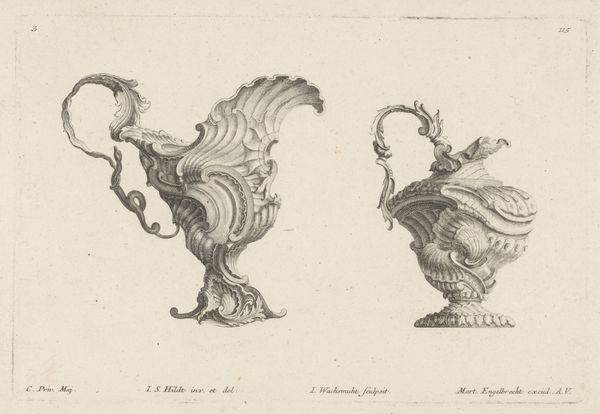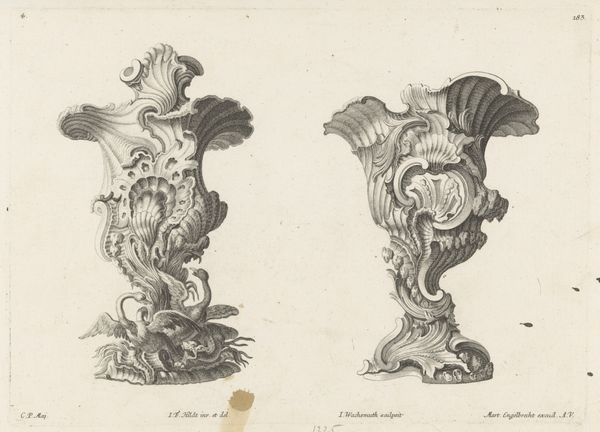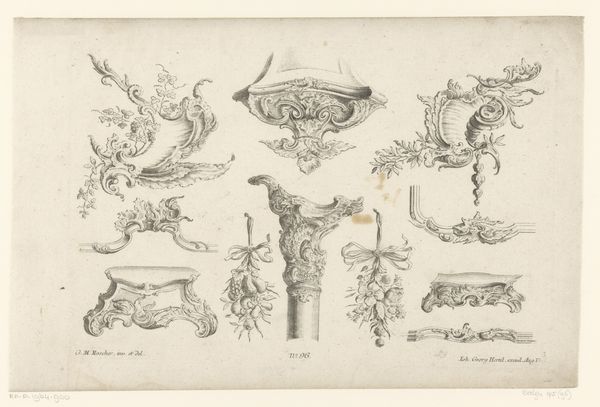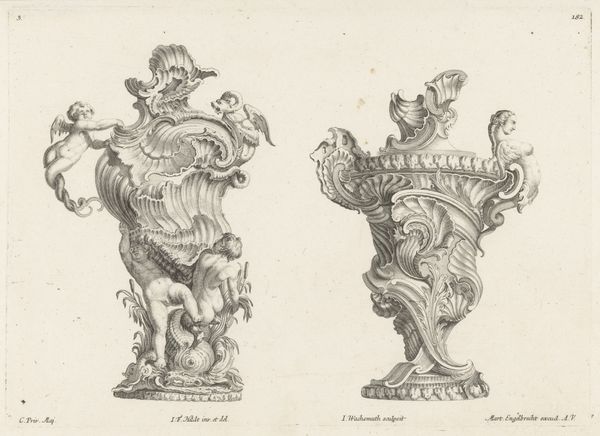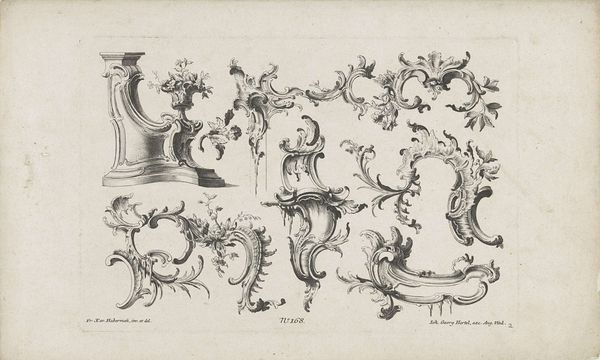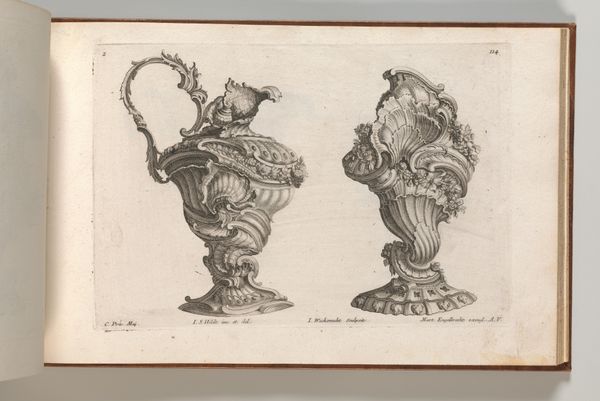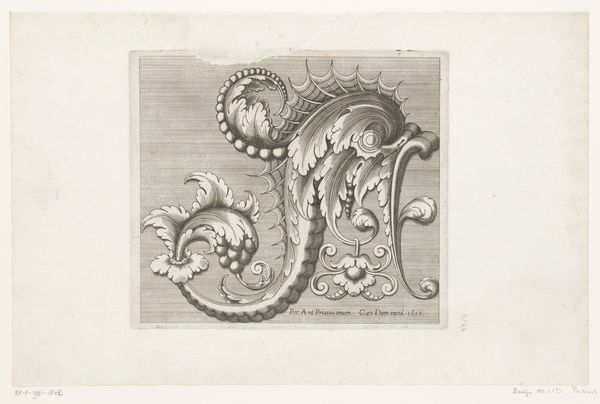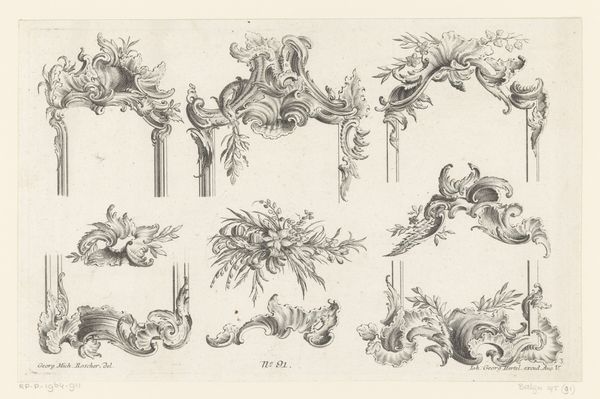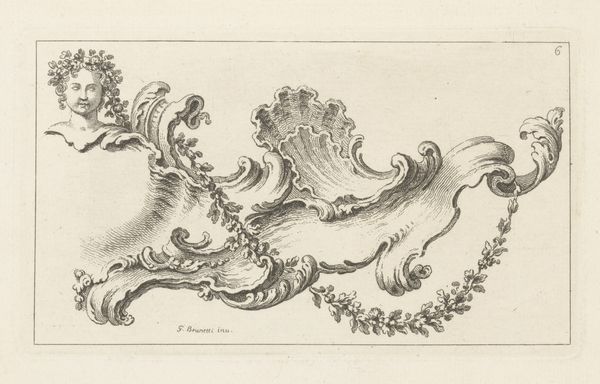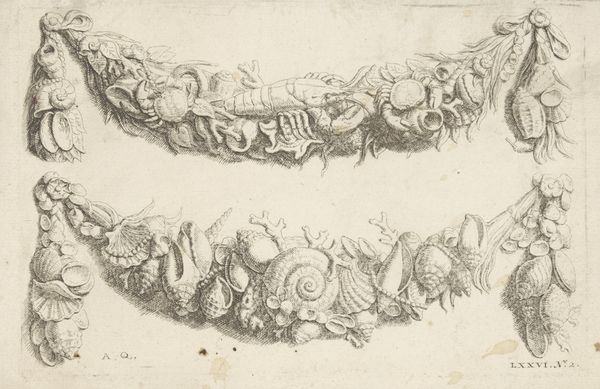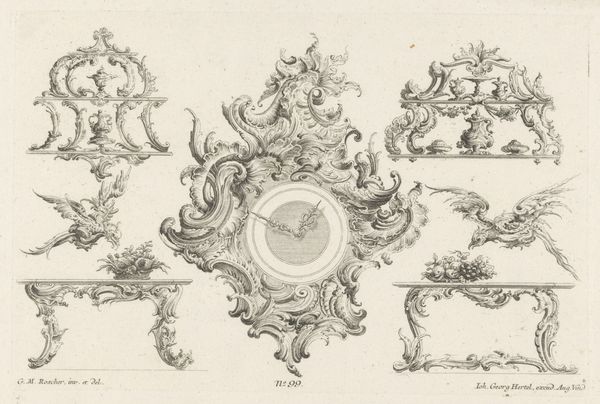
engraving
#
baroque
#
form
#
line
#
decorative-art
#
engraving
Dimensions: height 219 mm, width 304 mm
Copyright: Rijks Museum: Open Domain
Jeremias Wachsmuth created this ornamental design, Sierkan met fantasiewezen, sometime in the 18th century. Born in Germany, Wachsmuth’s rococo style reflects a period of elaborate ornamentation, but also one where global trade meant new access to shells and other natural forms. These three vessels evoke a deep history of cultural exchange and artistic interpretation. The central pitcher, adorned with a fantastical creature, and the two covered bowls, all seem born of the sea, rendered in meticulous detail. Their ornate nature speaks to the values of the elite who prized such decorative objects. But there is something else here too. These designs, intended for the wealthy, also hint at the labor and resources extracted from distant lands. The shells, the precious metals, and the very idea of luxury were often tied to colonial exploitation. Wachsmuth’s design invites us to consider not just the beauty of the objects, but also the complex network of power and privilege that made their creation possible.
Comments
No comments
Be the first to comment and join the conversation on the ultimate creative platform.

